How neuroscience artworks are inspired by nature
12 May 2021
Site artists Annie Cattrell and Freya Gabie were appointed to create a series of artworks for UCL’s new neuroscience facility at Grays Inn Road. They discuss how nature, the theme of Mental Health Awareness Week, informs their art and creative process.
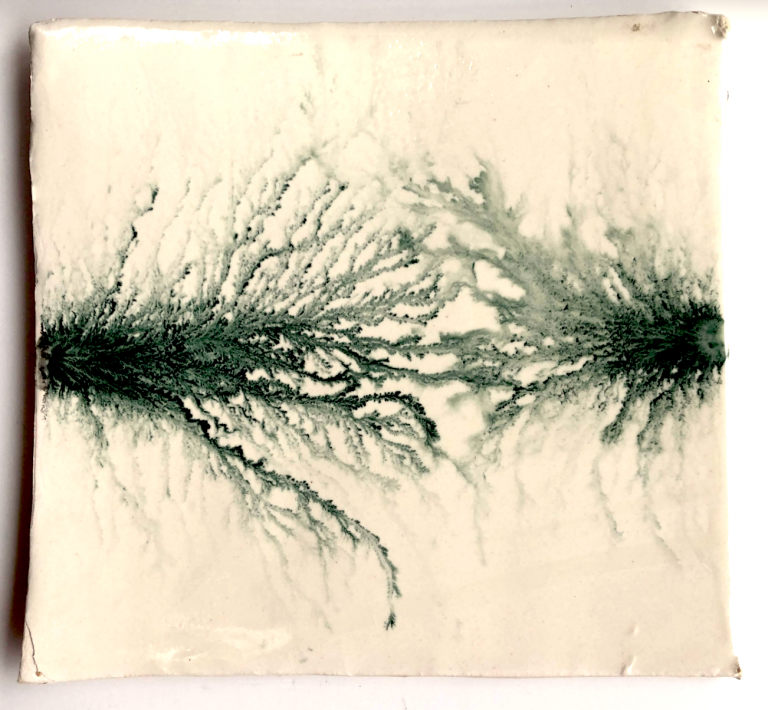
This year’s theme for Mental Health Awareness Week is nature. To what extent does nature influence your work?
Annie:
Nature has always influenced my thinking and work in the studio. While out walking and cycling I regularly pause to film, take photographs and draw the constant flux that is implicit in nature.
These observations might include different states of water and cloud formations, and how they move and behave; the precariousness of the tensile strength of a stem holding a magnificent bloom etc.
Also, while studying at Glasgow School of Art I read the seminal book, by Scottish zoologist D’Arcy Thompson, ‘On Growth and Form’ and visited the Hunterian Anatomy Museum at Glasgow University. Both influenced my understanding of the human body and how growth and structural formations happen in nature.
Planet Earth is ceaselessly in a state of change and transition, from the Big Bang to the Super Pangea where a large landmass slowly broke apart to form the continents that we know now. I find this flux and transition reassuring and it reminds me that everything changes and nothing is static.
Freya:
What a lovely question to think about. My work at its core is trying to explore and reflect on the different ways we connect to the world around us; how we experience it, engage with it, the stories we tell about it; how these engagements have shaped our histories, and how they’ll frame our future.
The relationships we form with nature will continually sustain us for our whole lives; it’s particularly interesting thinking about this in the context of the last year, where for a lot of people nature has become a far more important focus through the Covid pandemic.
I see all the work I make as a materialisation of a conversation with place, and the nature found in any place will always tell its stories, in this way it provides a link back to the past; to both recent and ancient history. Even in the very manmade environs on 256 Grays Inn Road, as part of my work I’ve been standing on and drawing pavement slabs that date back 300 million years – the Yorkstone formed on the bed of an ancient river in what is now the Pennines.
I have crouched down to examine the beautiful scaled ripples of this stone, knowing it’s the fossilised movement of water flowing thousands of years before the first humans walked on Earth. This connection grounds me.
Nature offers us a different perspective of time, and how we fit into that timeframe. Its deep reach back through billions of years, and the knowledge that it will persist in unimaginable ways after we have gone, I find both an inspiration and a comfort. It gives me a space and a distance with which to consider and confront human connection and exchange, and within that, ideas of transformation, transience and mortality within my work.
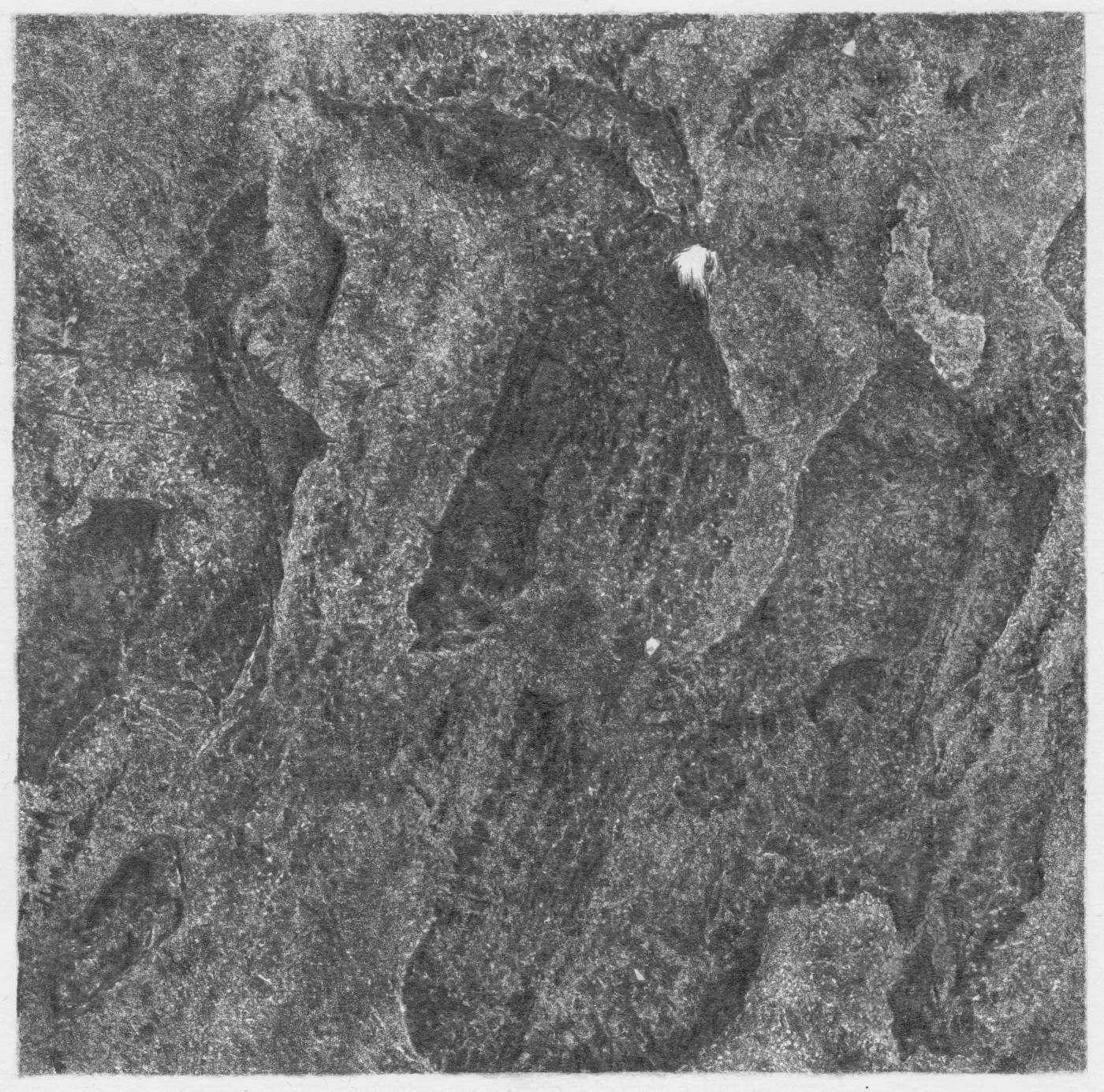
Leartes' Wonder, drawings of sections of ground around the site, pencil on paper, 2020 - Freya Gabie
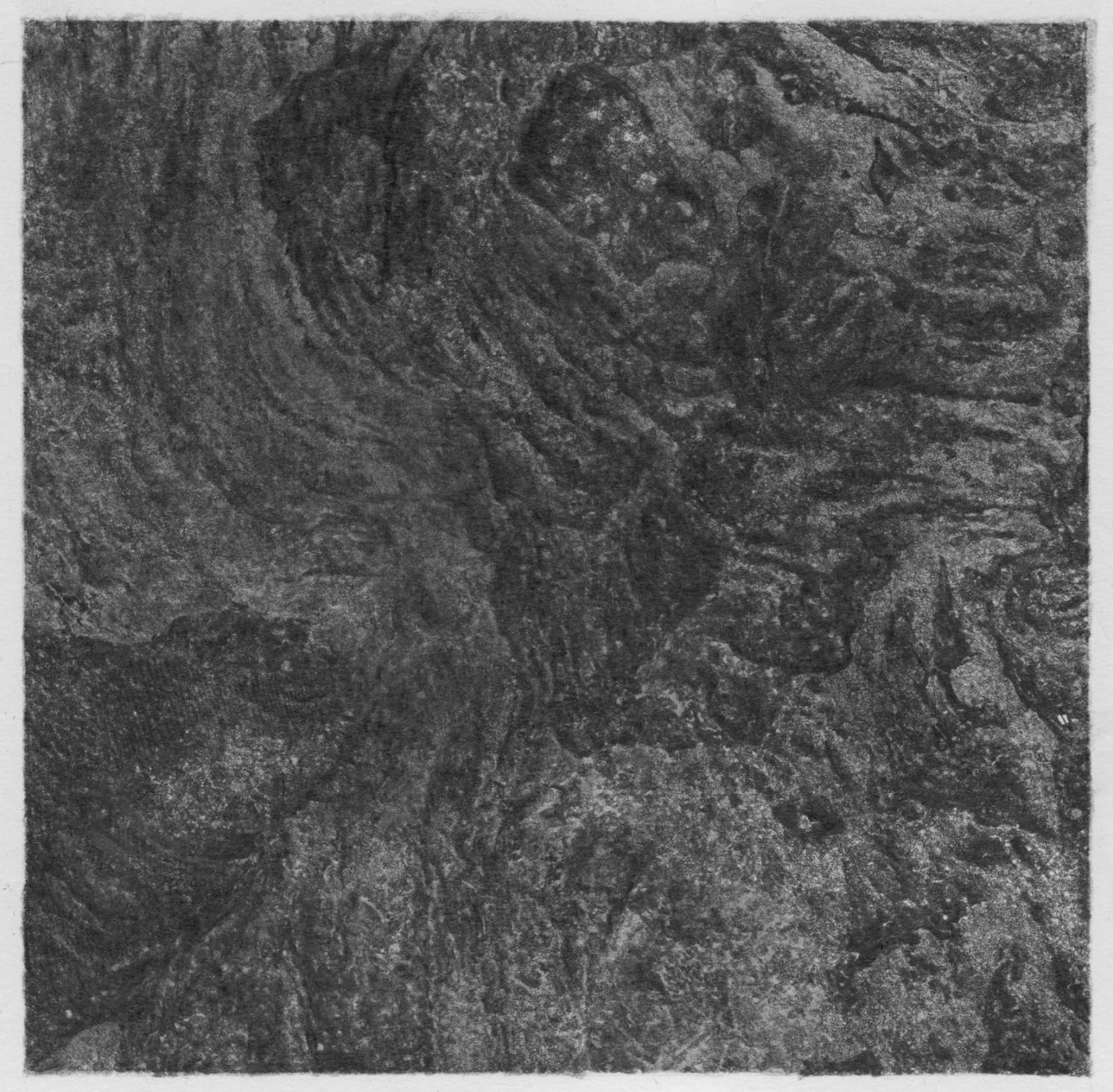
Leartes' Wonder, drawings of sections of ground around the site, pencil on paper, 2020 - Freya Gabie
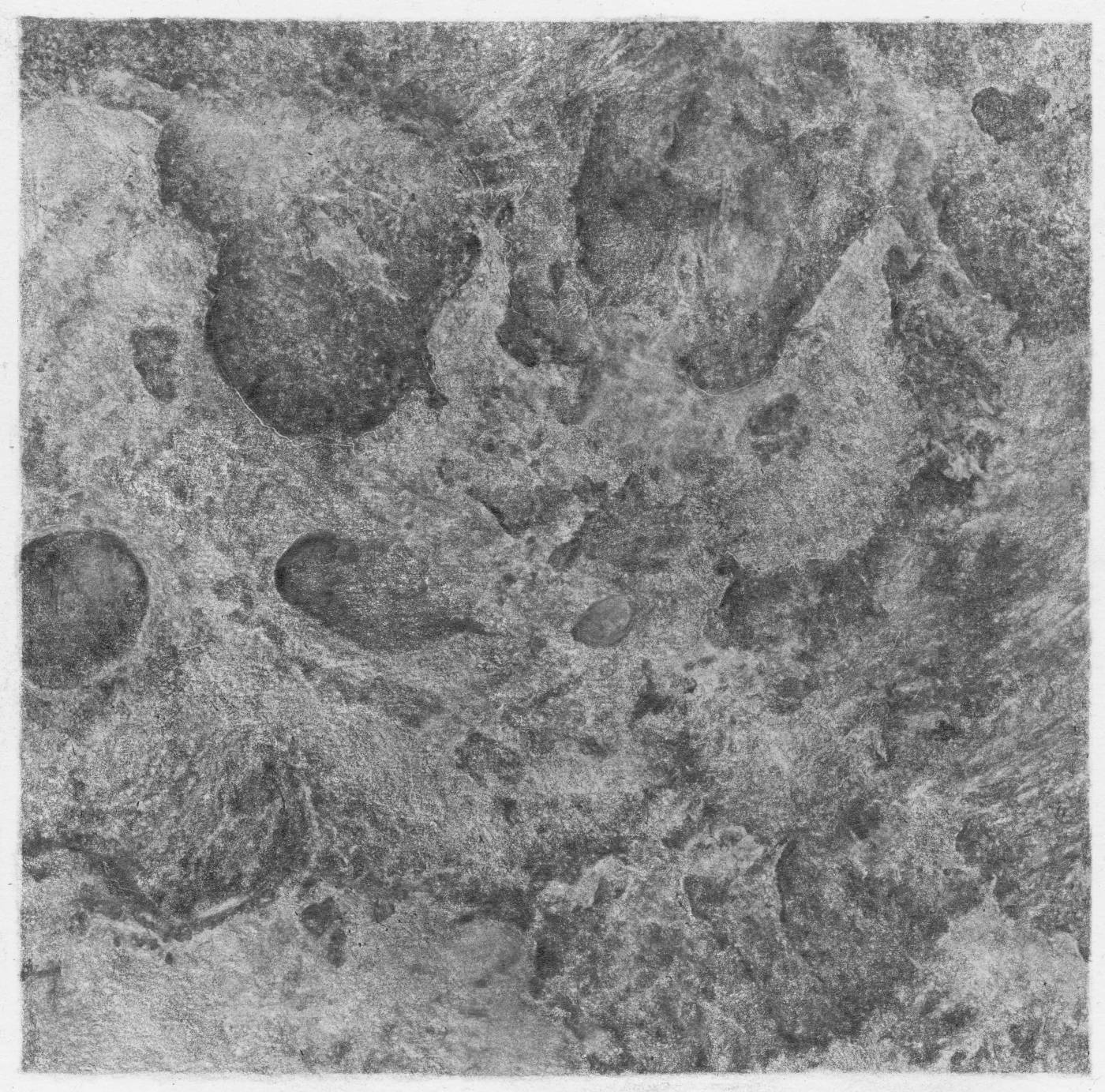
Leartes' Wonder, drawings of sections of ground around the site, pencil on paper, 2020 - Freya Gabie
Annie, you have been working with the neighbouring Calthorpe Community Garden recently. Can you tell us more about this?
I was fortunate to visit the city centre oasis that is the Calthorpe Gardens and they allowed me to pick one of their giant sunflowers, once it had started to go to seed. I wanted to cast the extraordinary mathematical pattern that the seed formation makes in the centre of the sunflower.
There were several thousand seeds in the largest giant bloom which I then cast into silicon to make a mould. This material captures and reveals the minute from which I can then cast a permanent replica. My plan is to make a final cast in a material called Jesmonite, that can be placed outside in the Calthorpe Gardens. I also took many photographs in their polytunnels and was impressed by the community spirit and collaborative work that makes Calthorpe into a city centre oasis.
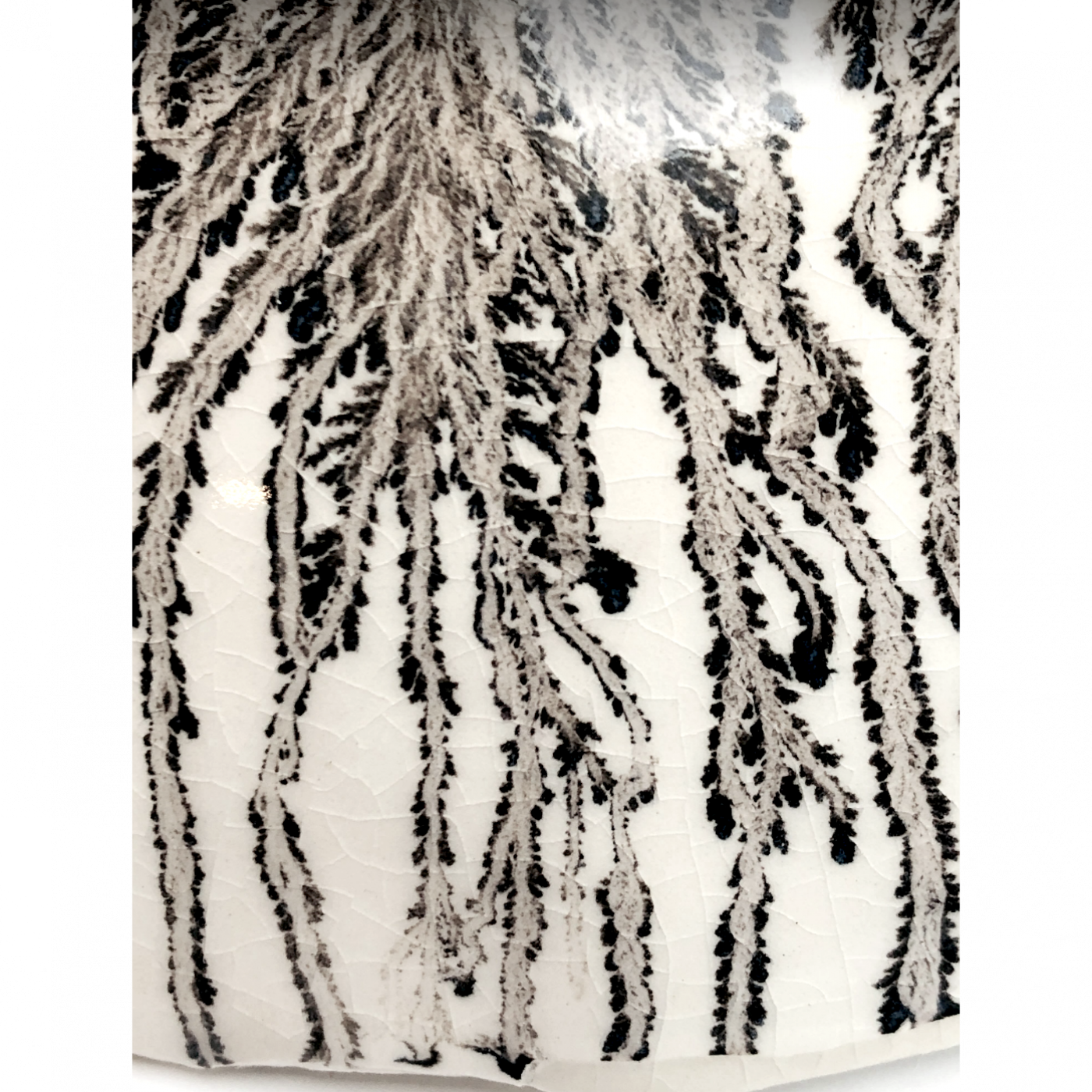
Ceramic sample dendritic connections - Annie Cattrell

Everything is connected ceramic test - Annie Cattrell

Initial cast of Calthorpe sunflower - Annie Cattrell
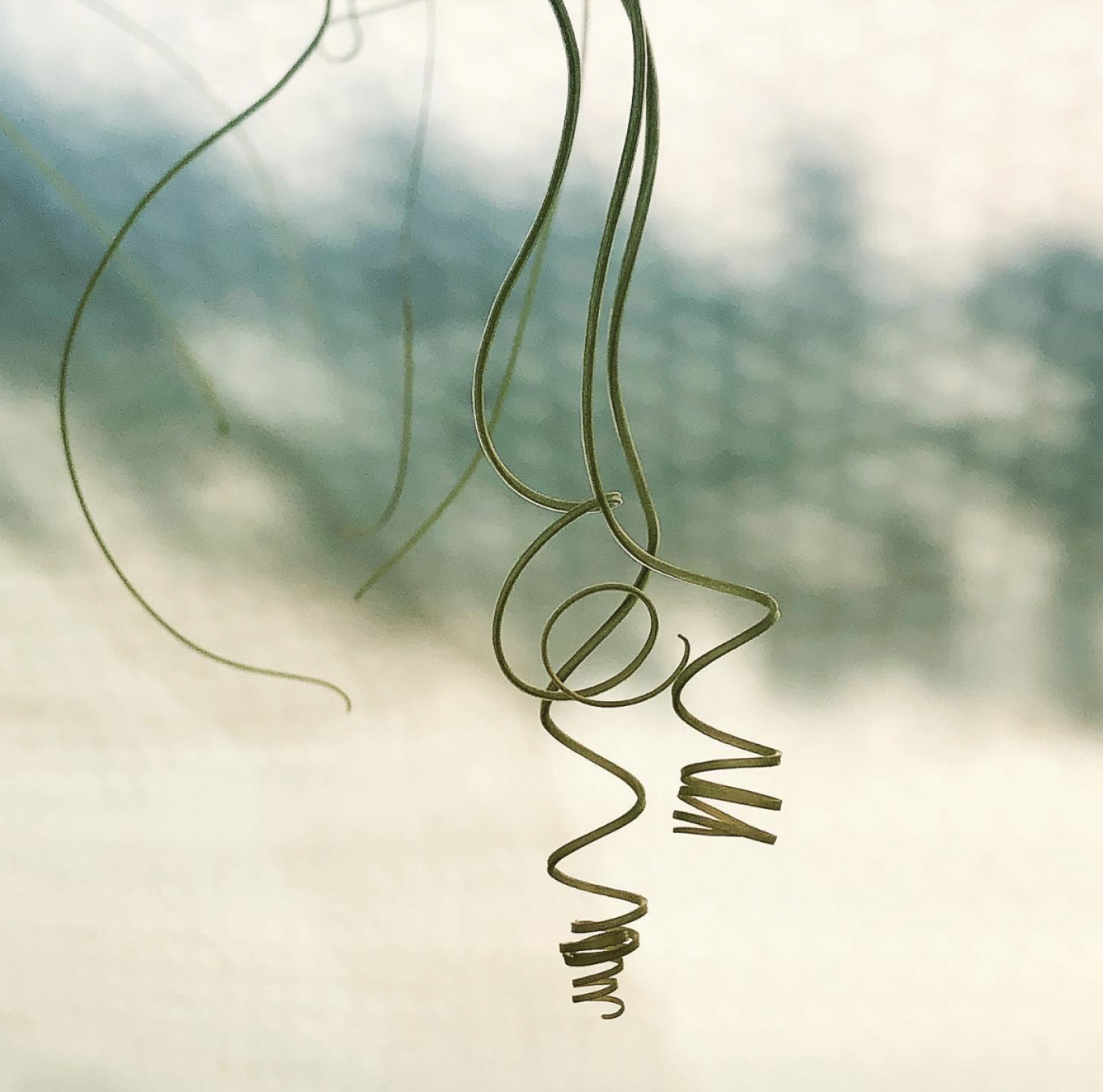
Inside Polytunnel at Calthorpe Gardens - Annie Cattrell
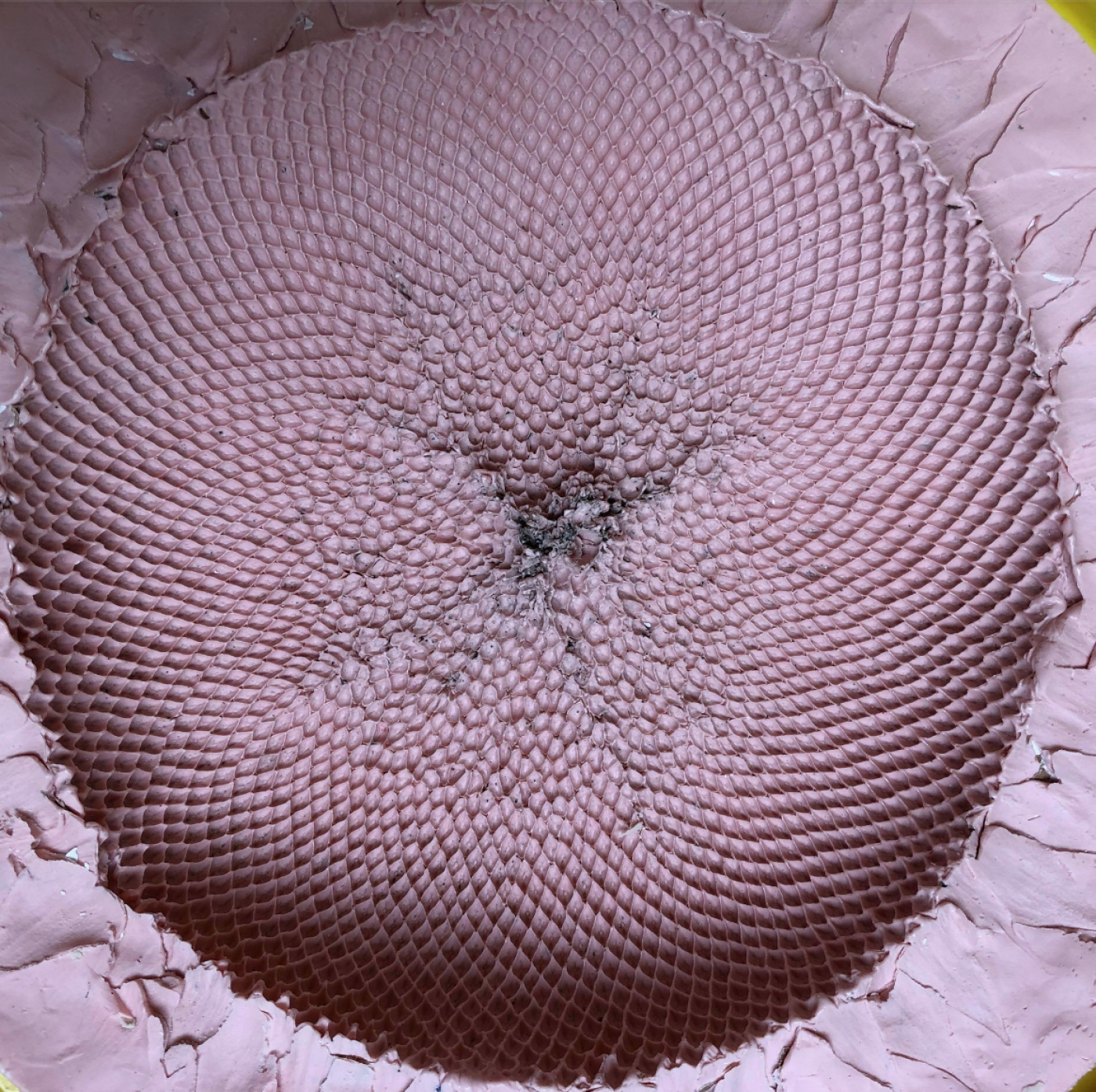
Mould from Calthorpe sunflower - Annie Cattrell
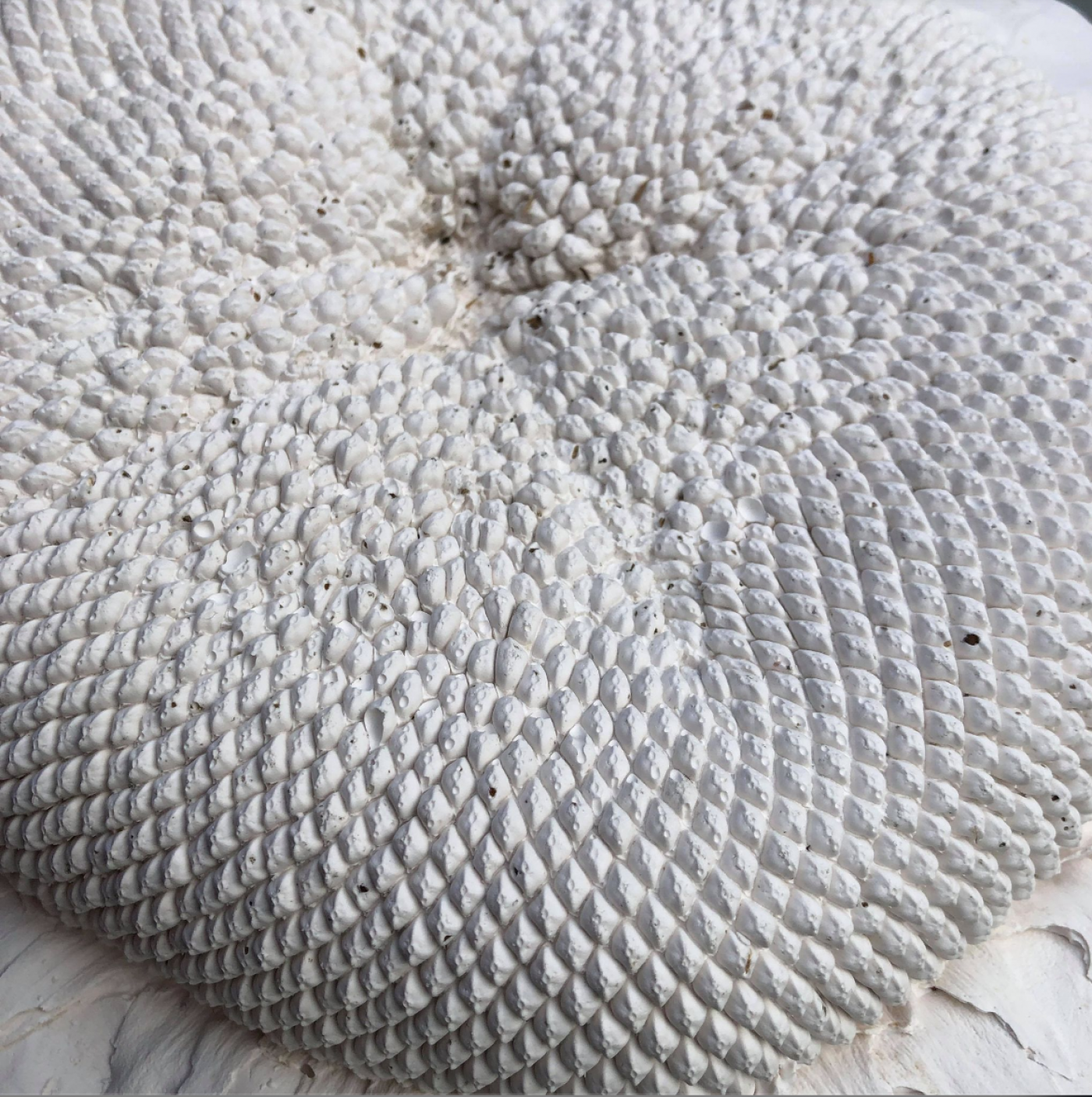
Plaster cast of Calthorpe sunflower - Annie Cattrell

Sunflower from Calthorpe gardens - Annie Cattrell
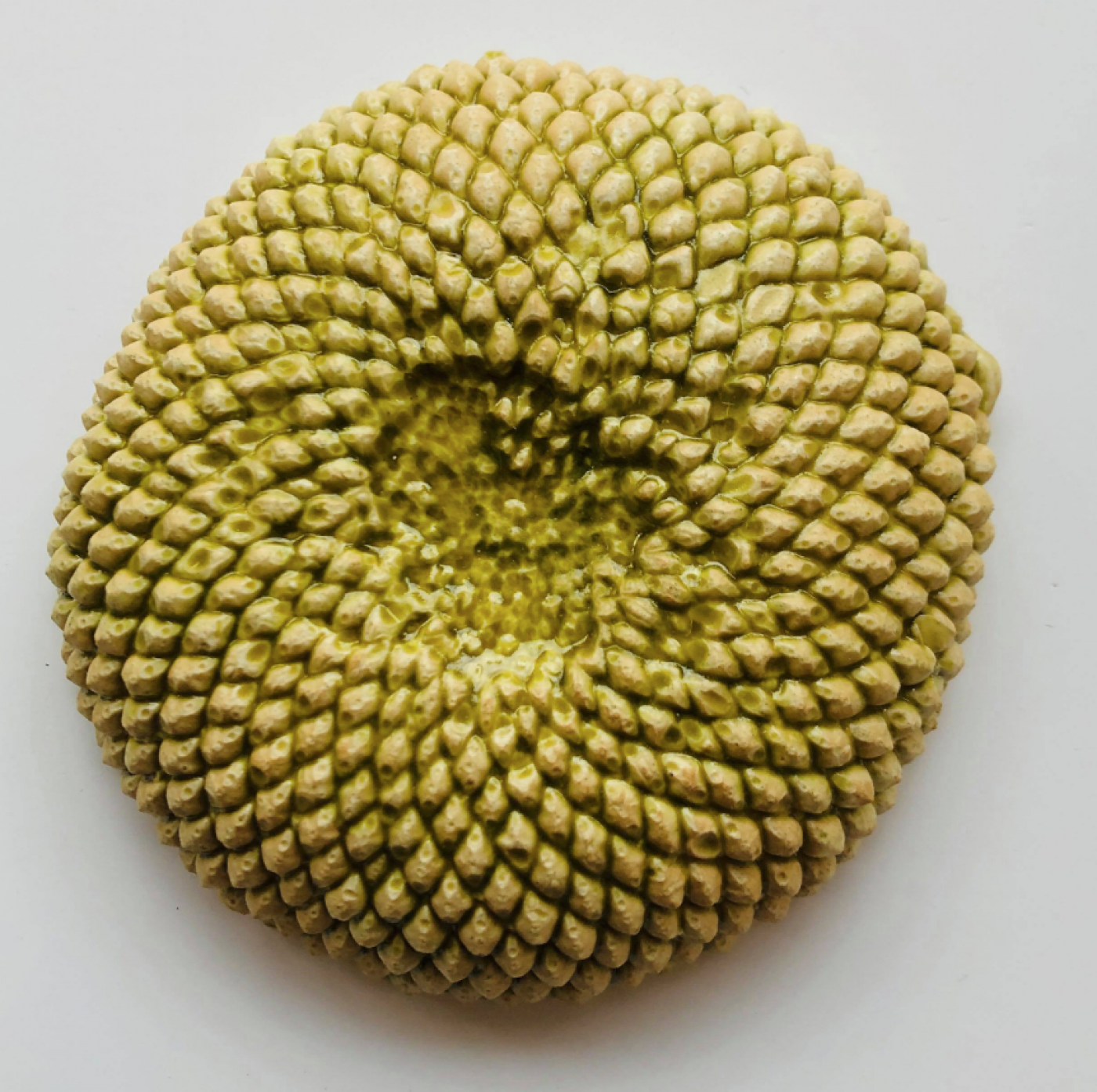
Sunflower from Calthorpe gardens - Annie Cattrell
Freya, your recent work investigates the geological history of the site of the future neuroscience facility at Grays Inn Road. Can you tell us more about this?
Yes, I wanted to ‘scratch the surface’ of the site to uncover its histories and stories, in the hopes that this discovered past could be a conduit to exploring the site’s future. How could the lives of this previous site speak to the research and discoveries due to take place at the very frontier of neurological research?
Looking beneath the surface is also central to neurological research; I’m very interested in the correlation between techniques used by both archaeologists on site and neurological researchers in mapping the concealed topographies hidden under earth and skin.
I wanted to echo this in the way I approached the site, in a sense treating it as a patient; looking beneath the surface to examine its different layers and expose what lies below to the light.
One of the areas I’ve been researching is the historic subterranean River Fleet which flows beneath the east of the site, fed by Bagnigge Wells.
Its waters were discovered and found to have health giving properties in 1760 by Dr John Bevis, a physician and astronomer, turning the site into one of the most popular health spas of the 18th century, the river becoming known as the ‘River of Wells.’ The historic connection between water and health is something I’m keen to draw out further, exploring how exposing the river in some metaphorical way may give us the language to consider and rearticulate neurological diseases in altered, unexpected form.
Thinking about the Fleet led me to another subterranean river: the Lethe, one of the five rivers of the underworld Hades. In Greek mythology people drink the Lethe’s waters to forget their previous selves. In Classical Greek, the word Lethe translates as “concealment”, but is also related to the Greek word for "truth" which literally means "un-forgetfulness.” These two rivers, one mythical, one physical, have become the project’s arteries; like blood streams beneath the skin, they feed a groundwork of ideas and have become my conduit to interrogate time, memory, transformation, renewal, connection and exchange.
Interestingly, water has been at the forefront of dementia research in the last 12 months. Discoveries coming out of the UK Dementia Research Institute's centre at the University of Cambridge have shown a ‘cold shock’ protein has been found in the blood of regular winter swimmers at a north London Lido. So we are back to nature again, and the incredible impact it can have on our health and well-being. This will definitely inspire me to take that wild swim in future!
How do you think art can contribute to the experience of future visitors to the new facility?
Annie:
Art can highlight, focus and draw attention to ideas and issues that might help to give different perspectives and experiences within this intense context. It is my intention to focus on uplifting sculptural interventions that will remind and prompt visitors and staff of the extraordinary possibilities in life and in nature.
Art can potentially allow visitors to pause, reflect and perhaps enjoy a deeper awareness of their surroundings, its history and the premise as to why the dementia facility is there, and what everyone is working towards. The words exactitude, care and hope spring to mind!
Freya:
Throughout this process, I’ve been conscious of how the building will be experienced in very diverse ways by people encountering it. A patient will have a different relationship to the building than the doctor who may be treating them. I wanted to first think about how an artwork placed in this environment would have the capacity to engage everyone, across these differing contexts.
For me, art works best when it’s able to transcend the confines of individual experience and situation to explore the human experiences that we all share. It can offer a translation of this which allows for a new engagement, or a fresh perspective.
I feel it’s also important for the work to offer an ongoing and unfolding exchange with people who may encounter it on a daily basis, workers and patients in the building will grow accustomed to their surroundings as they spend increasing time in it, and I want the work I put into the building to offer something different each time it is encountered.
This building will be the site of ground-breaking research, the frontier of neurological exploration. It seems important in this context for the work to echo that, being not static, but ever evolving; much like the River Fleet flowing beneath the site, it is different on each meeting.
To this end I’m exploring the use of materials which allow for flux and change, such as live feed soundscapes, and embedding work as small ruptures into the fabric of the building, which although not immediately apparent may hopefully surprise someone walking down a corridor one Tuesday afternoon!
 Close
Close

